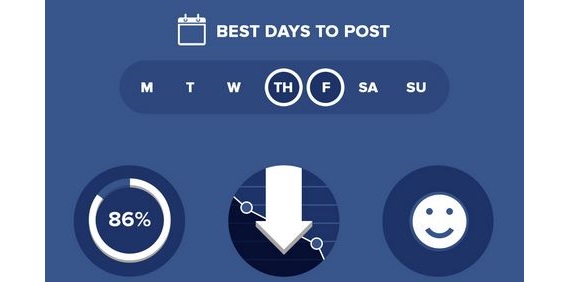It doesn’t really matter what line of business you are in these days. You could be a technology startup that develops a range of mobile apps. You could be a professional wedding photographer. You could be a natural food and supplement company. Or you could be a freelance writer like me. Whatever the case may be, it’s obvious enough that social media should play an important role in your overall marketing strategy.
The trouble is that too many people (and companies) just take the haphazard, shotgun-style approach to their social media strategy. They just throw out whatever updates whenever they happen to tickle their fancy and they simply hope for the best. It doesn’t really work that way and while we could go at least about the content strategy involved, today’s post will focus on just one element: timing.
Not All Social Networks Are the Same
Part of the confusion arises because all of these different networks can covered under the same blanket term “social media,” but each of these networks needs to approached in a slightly different way because of how they operate the core demographics that they have. I’ve written about how Pinterest is changing for example, even though most of its users are still fashion-conscious, youthful-thinking female consumers.
A short while ago, Quick Sprout’s Neil Patel posted an infographic on the best times to post on social media. The main takeaways from that can be summarized as follows:
- Facebook: Post on Thursdays and Fridays, because “the less people want to be at work, the more they are on Facebook.” You’ll get the most shares around 1pm and the most clicks around 3pm.
- Twitter: B2Bs get better engagement during the work week, while B2Cs get more engagement on Wednesdays and weekends. The highest click-thru rates are observed at 12pm (lunch time) and 6pm (evening commute home).
- LinkedIn: Post mid-week (Tuesday, Wednesday and Thursday) during business hours for best results. This makes sense, since LinkedIn is much more of a work-oriented network.
- Pinterest: Pin your content Saturday evenings when people are relaxing at home, casually browsing through material that isn’t all that urgent.
- Instagram: The highest engagement is during the week, particularly on Mondays and during off-work hours.
- Google+: Weekday mornings are the best times to post, especially around 9am on Wednesdays.

If you stop and consider when people are most likely to engage with these different networks, you’ll get why these times are typically the most appropriate. This is more profound on “real-time” networks like Instagram and Twitter than on the algorithm-based news feed of Facebook.
Schedule Your Updates Accordingly
“But what if I’m not at my computer during those hours? What if I don’t want to be tethered to my social networks around the clock?”
This used to be an issue for many social media marketers, but thanks to terrific dashboards and services like HootSuite or Buffer, you don’t have to worry about that anymore. For a lot of these networks, you can schedule your updates in advance, capitalizing on these “best times” to post.
Even if you’re sharing the same blog post, you can custom tailor how it is presented and when it is sent out based on each of these networks. Neil Patel says that by following these guidelines, he was able to see an increase in traffic from social media of up to 39%. That’s nothing to sneeze at.
Keep Your Followers Engaged
And this goes hand-in-hand with the previous point. Unless you are “live-tweeting” an event or otherwise providing real-time coverage, it doesn’t make sense to bombard your followers with a flurry of content only to follow that by an extended period of silence.
Just as you should have a steady flow of content on your blog, the same is true for all of your social media sharing as well. Key in on those ideal times, but don’t neglect the rest of the day and week either. You’ll likely have followers from other time zones, not to mention regular folk who happen to check during other times.
And remember that social media is meant to be a conversation. It’s a discussion that involves actively engaging with your audience and not simply using these networks as your soapbox-style platforms. And that can happen at any time of the day.
Go Download John Chow’s New eBook and Live The Dot Com Lifestyle!!
